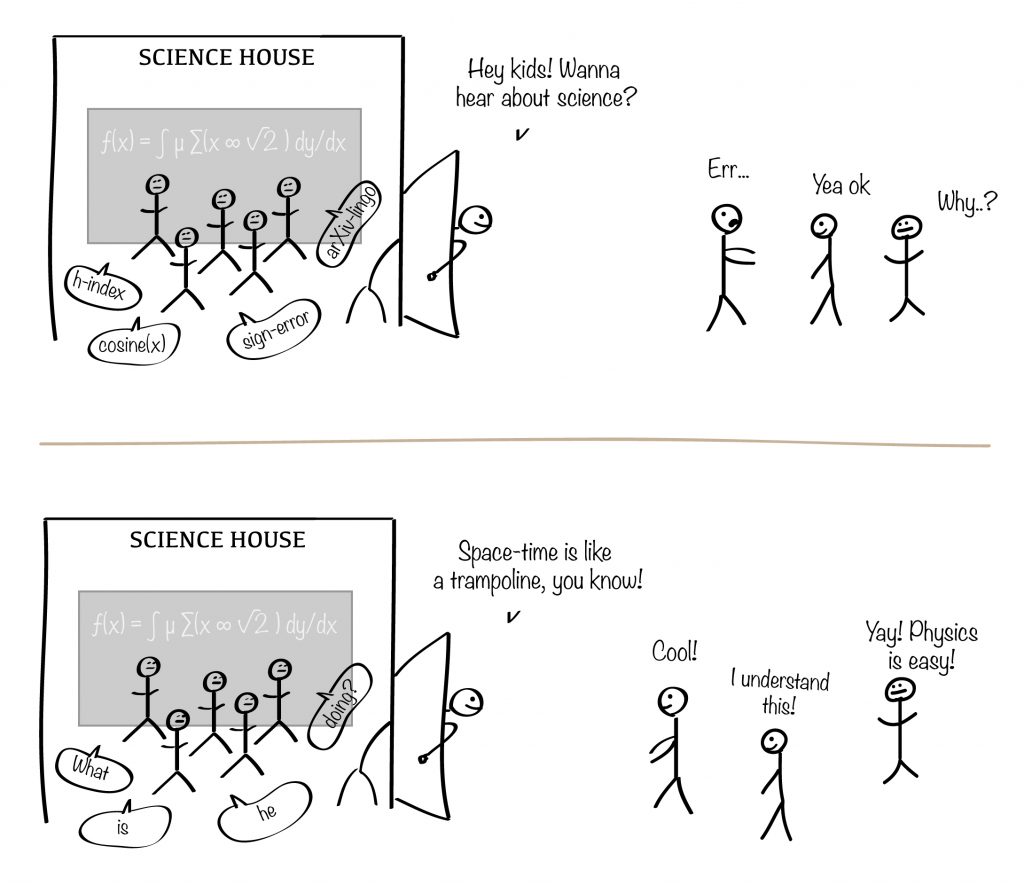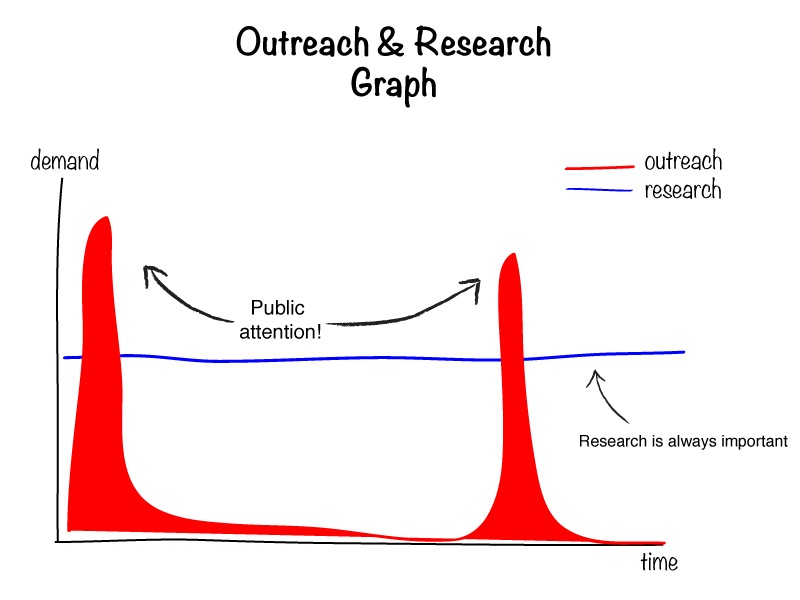What is science communication? What is a science communicator? Who are they? Are they really relevant? And how do you make a living out of it?
Science communication is the ability to explain science and scientific research to people with a non-scientific background. Medical doctors have been doing this for years. When you go to the doctor with a pain in your back, the doctor does not use the clinical Latin words to explain your situation to you. Instead the doctor elaborates clearly how your back works, what is wrong with it and how the pain can be treated. The same applies to science communication. A physicist should not serve a bunch of curled-up equations to the audience. Instead, she/he should explain in human language, what e.g. gravity is about, how we got our knowledge, which parts we do not (yet) understand and why. It should leave the audience with a sense of inclusion to the scientific community and not exclusion from it, similar to how you ideally should feel when leaving the medical doctor’s office: like you understand what was just explained to you. Natural sciences like physics and chemistry are not at level with medical science when it comes to communication, and there are several reasons for this. A study by Ecklund et al. in 2012 showed that outreach (which is a more general term for science communication and teaching) is viewed negatively in the scientific community and that scientists would generally consider outreach to be less prestigious than, say, research or conference talks. Additionally, outreach is rarely (or more accurately: never) compensated and the incentive to do it is therefore even smaller.

outreach the person does. Copyright Astronomicca
A science communicator is someone who bridges the gap between the science and the public. This includes explaining fundamental topics, that has been known possibly for decades or centuries (like gravity) or explaining new scientific findings (like – see also Tommi Tenkanen’s blogpost for TSB). There are overall two groups: the active scientists that engage in science communication additionally to their research (like Sean Carroll , Stephen Hawking or Brian Greene) and the active communicators, who are not active researchers, but have a background in science and now spend their time explaining to the public (like The Physics Girl, Veritasium and, well, me). Both groups play an important role in science communication, especially at this present time, where some people around the globe tend to think the Earth is flat or that global warming is FAKE NEWS (oh my). The potential receding scientific knowledge in the general public has wide and severe consequences, as it will not only affect our general level of enlightenment; it will also affect who we choose as state leaders and how we leave the condition of our planet. Decisions based on scientific method are different from emotional-based decisions, and in order to preserve our planet and keep a healthy and modern society, we need to make decisions based on science. The increased online commercial focus to appeal to our emotions in order to get votes or sell a product makes it more important than ever before to communicate actively and openly about science and explain what scientific method is. Not to mention the practical implications that lack of science in the public space will have: government will slowly but surely shut down public research institutions – and these institutions are of crucial importance to fundamental research. Do you want a science institution to do research on, say, obesity if it is funded by the pharmaceutical industry? I am guessing no.
Science communication is more important than ever. But scientists are also busier than ever. Not only do they have their own scientific work to maintain, they also have teaching, grant applications, travelling, supervising, etc, so you can understand why blogging or tweeting might be far down their list. Also, they might not be good at it. Let us be honest, not everyone has a flair for public communication (in the same way not everyone has flair for scientific research). My personal (and professional) belief is that this should not stand in the way of communicating scientific results.
I make a living out of this exact problem: the lack of time and possibly also capabilities from the scientific researchers. My business is a consultancy (https://www.astronomicca.com) and my business model (see illustration below) is to be available when and where researchers need it. This accommodates the varying demand from the science institutions and it does not require universities to make a permanent job positions for communication staff. I offer services on hourly basis and up to projects that last for months.

Additionally, I write popular scientific articles and give talks about astronomy and outreach. Other science communicators (who are not active researchers and therefore do not get paid via their institutions) are usually found as outreach officers at universities (not many universities have these, mostly due to salary costs), science writers, public speakers or youtubers. These days there is a plethora of digital tools available, so the creativity depends mostly on the author.
If you consider going into science communication, I recommend you to first of all identify your own strengths and fields of knowledge. Maybe you are super good illustrator and know a lot about stem cells? Or maybe you have a sharp pen and want to convey the wonders of chemistry? Maybe you are a great public speaker and have insight to solid-state physics? No matter where you strengths are, you must identify them and utilize them. After that, you can begin to identify your target audience and how to reach them.
Science communication makes the world a better place, and the more of us there are, the larger impact we get. Feel free to reach out and contact me , if you have comments or are curious about Astronomicca.